Common Procedures
Do the Dentists at Aliso Kids Dental use Digital X-rays?
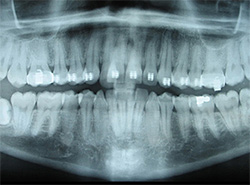 Yes! Aliso Kids Dental and Orthodontics uses the most advanced dental technology possible. This is just as important as staying up-to-date on the latest dental treatment techniques. As a kids dentist, we are dedicated to providing your child with the safest and most convenient treatment options available, we utilize advanced digital X-ray technology in our state of the art Aliso Viejo office.
Yes! Aliso Kids Dental and Orthodontics uses the most advanced dental technology possible. This is just as important as staying up-to-date on the latest dental treatment techniques. As a kids dentist, we are dedicated to providing your child with the safest and most convenient treatment options available, we utilize advanced digital X-ray technology in our state of the art Aliso Viejo office.
Is a digital X-ray safer for kids?
As Aliso Viejo's top children's dentist office, we care about your child's health and well-being, we believe that reducing the amount of radiation exposure is extremely important. Although the amount of radiation used in dental X-rays is very small, the effect is cumulative, so all radiation counts. Digital X-rays can reduce your child's exposure to radiation by up to 80 percent!
Are there any advantages of digital X-Rays for kids?
- We want your children to be as comfortable as possible during their dentist appointment, and digital X-rays eliminate the need to bite down on a sharp piece of film encased in plastic.
- There is no need to wait for the X-ray film to be developed before it can be viewed, so the entire checkup can be a lot shorter.
- The digital images can be enlarged and manipulated, giving the pediatric dentist and orthodontist a clearer, more detailed look at your child's teeth.
- Because your child can see the image enlarged on a screen, they can better understand why taking care of their teeth is important.
- It's better for the earth! There is no need to use harmful chemicals to process film.
As the premier pediatric dentist office in Orange County, our dentists and orthodontists are focused on making your child's experience as comfortable as possible. At their next appointment, the pediatric dentist will be happy to answer any questions you may have.
Are Dental Sealants right for my child?
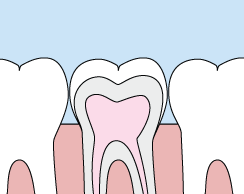 Sometimes brushing is not enough, especially when it comes to those hard-to-reach spots in your child's mouth. It is difficult for a toothbrush to get in between the small cracks and grooves on teeth. If left alone, those tiny areas can develop tooth decay. Sealants give your child's teeth extra protection against decay and help prevent cavities.
Sometimes brushing is not enough, especially when it comes to those hard-to-reach spots in your child's mouth. It is difficult for a toothbrush to get in between the small cracks and grooves on teeth. If left alone, those tiny areas can develop tooth decay. Sealants give your child's teeth extra protection against decay and help prevent cavities.
Dental sealants are a plastic resin that bonds and hardens in the deep grooves on the tooth's surface. When a tooth is sealed by the pediatric dentist, the tiny grooves become smooth, and are less likely to harbor plaque. With dental sealants, brushing becomes easier and more effective against tooth decay.
Dental sealants are typically applied to children's teeth as a preventative measure after the permanent teeth have erupted as a way to prevent tooth decay. It is more common to seal "permanent" teeth rather than "baby" teeth, but every patient has unique needs, and the pediatric dentist will recommend sealants on a case-by-case basis.
Sealants last from three to five years, although it is fairly common to see adults with sealants still intact from their childhood. A dental sealant only provides protection when it is fully intact so if your child's sealants come off, let the dentist know, and schedule an appointment for your child's teeth to be re-sealed. At Aliso Kids Dental, we GUARANTEE our sealants - which not many others will do. Ask us about our Sealant Guarantee at your next appointment.
Does fluoride prevent cavities?
Nobody wants their child to have a cavity. At Aliso Kids Dental, our pediatric dentists educate your kids about the use of fluoride on their teeth. Fluoride is effective in preventing cavities and tooth decay and in preventing plaque from building up and hardening on the tooth’s surface. A fluoride treatment in your dentist’s office takes just a few minutes and is much different than the fluoride treatment you had as a child. Gone are the days of trays filled with goopy fluoride! After the treatment, patients may be asked not to rinse, eat, or drink for at least 30 minutes in order to allow the teeth to absorb the fluoride. Depending on your oral health or your doctor’s recommendation, you may be required to have a fluoride treatment every three, six, or 12 months.
Dental Fillings
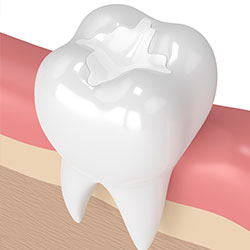 Traditional dental restoratives, or fillings, may include gold, porcelain, and composite. The strength and durability of traditional dental materials continue to make them useful for situations where restored teeth must withstand extreme forces that result from chewing, such as in the back of the mouth.
Traditional dental restoratives, or fillings, may include gold, porcelain, and composite. The strength and durability of traditional dental materials continue to make them useful for situations where restored teeth must withstand extreme forces that result from chewing, such as in the back of the mouth.
Newer dental fillings include ceramic and plastic compounds that mimic the appearance of natural teeth. These compounds, often called composite resins, are usually used on the front teeth where a natural appearance is important, as well as on the back teeth depending on the location and extent of the tooth decay.
What's right for your child?
Several factors influence the performance, durability, longevity and expense of dental restorations, including:
- The components used in the filling material
- The amount of tooth structure remaining
- Where and how the filling is placed
- The chewing load that the tooth will have to bear
- The length and number of visits needed to prepare and adjust the restored tooth.
Before your child's treatment begins, the doctor will discuss with you all of your options, and help you choose the best filling for your child's particular case. To help you prepare for this discussion it may be helpful to understand the two basic types of dental fillings — direct and indirect.
- Direct fillings are fillings placed immediately into a prepared cavity in a single visit. They include glass ionomers, resin ionomers, and composite (resin) fillings. The dentist prepares the tooth, places the filling, and adjusts it in just one appointment.
- Indirect fillings generally require two or more visits. They include inlays, onlays, veneers, crowns, and bridges fabricated with gold, base metal alloys, ceramics, or composites. During the first visit, the dentist prepares the tooth and makes an impression of the area to be restored. The dentist then places a temporary covering over the prepared tooth. The impression is sent to a dental laboratory which creates the dental restoration. At the next appointment, the dentist cements the restoration into the prepared cavity and adjusts it as needed.
Dental Extractions
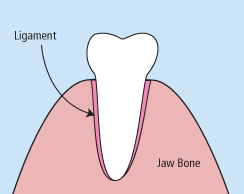 There are times when it is necessary to remove a tooth. Sometimes a baby tooth has misshapen or long roots that prevent it from falling out as it should, and the tooth must be removed to make way for the permanent tooth to erupt. At other times, a tooth may have so much decay that it puts the surrounding teeth and jaw at risk of decay, so your doctor may recommend removal and replacement with a bridge or implant. Infection, orthodontic correction, or problems with a wisdom tooth can also require removal of a tooth.
There are times when it is necessary to remove a tooth. Sometimes a baby tooth has misshapen or long roots that prevent it from falling out as it should, and the tooth must be removed to make way for the permanent tooth to erupt. At other times, a tooth may have so much decay that it puts the surrounding teeth and jaw at risk of decay, so your doctor may recommend removal and replacement with a bridge or implant. Infection, orthodontic correction, or problems with a wisdom tooth can also require removal of a tooth.
When it is determined that a tooth needs to be removed, your dentist may extract the tooth during a regular checkup or may request another visit for this procedure. The root of each tooth is encased within your jawbone in a "tooth socket," and your tooth is held in that socket by a ligament. In order to extract a tooth, your dentist must expand the socket and separate the tooth from the ligament holding it in place. While this procedure is typically very quick, it is important to share with your doctor any concerns or preferences for sedation.
Once a tooth has been removed, neighboring teeth may shift, causing problems with chewing or with your jaw joint function. To avoid these complications, your dentist may recommend a space maintainer or that you replace the extracted tooth.
Mouthguards
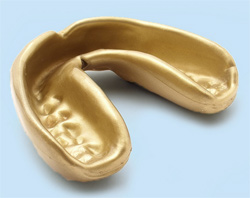 Whether she wears braces or not, protecting your child's smile while playing sports is essential. Sports related injuries to the mouth and jaw are some of the most common injuries received by athletes. Aliso Kids Dental's goal is to help minimize your child's chances of a sports-related injury.
Whether she wears braces or not, protecting your child's smile while playing sports is essential. Sports related injuries to the mouth and jaw are some of the most common injuries received by athletes. Aliso Kids Dental's goal is to help minimize your child's chances of a sports-related injury.
Mouthguards help protect teeth and gums from injury. The American Dental Association recommends the use of a mouthguard if your child participates in basketball, boxing, hockey, football, gymnastics, lacrosse, martial arts, racquetball, rugby, track and field, skateboarding, skiing and snowboarding, skydiving, soccer, surfing, volleyball, water polo, weightlifting or wrestling.
Types of mouthguards
Choosing the right mouthguard is essential. There are three basic types of mouthguards: the pre-made mouthguard, the "boil-and-bite" fitted mouthguard, and a custom-made mouthguard from your dentist. When choosing a mouthguard, be sure to pick one that is tear-resistant, comfortable and well fitted for your child's mouth, easy to keep clean, and does not prevent him from breathing properly. If he wears braces or a retainer, it is imperative for him to wear a mouthguard. Your dentist can show your child how to wear a mouthguard properly and how to choose the right mouthguard to protect his smile.
Taking care of your mouthguard
Similar to a retainer, braces, or any other special dental appliance, it is important to take care of your child's mouthguard by storing it properly and keeping it clean, as well as knowing when to replace an old mouthguard with a new one. Here are a few simple ways to keep your child's mouthguard clean and working correctly:
- Gently scrub the mouthguard after each use with a toothbrush and toothpaste.
- Store the mouthguard in a protective case.
- Do not leave the mouthguard in the sun or in hot water, as it may melt or become deformed.
- Replace the mouthguard at the beginning of every new sports season. You should also replace your child's mouthguard if you notice it has become worn and not longer fits properly.
- Do not wear a retainer with a mouthguard. If your child wears braces, your dentist will help design a mouthguard to protect his teeth and his braces.
- Do no chew on or cut pieces off of your mouthguard. Mouthguards come in different shapes and sizes, so ask your dentist which is best for your child.
- Bring the mouthguard to each dental checkup and the dentist can check to make sure it's still in good shape!



